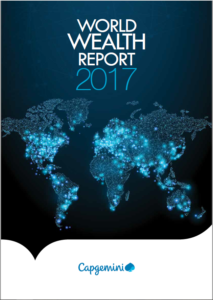Curious about your HNW prospect’s liquid assets? We have good news!
By Erica Sauer
What Is The Report?

Compiled and written for the financial services sector, Capgemini’s World Wealth Report is now in its 21st year. It is based on survey responses from more than 2,000 HNWIs from across the globe and includes information about high net worth individual’s (HNWIs)
asset allocations, which is of key interest to fundraising research.
As defined by Capgemini, a HNWI is someone with investable assets of at least US$1 million excluding primary residence, collectibles, consumable, and consumer durables.
What Are Key Findings From The Report?
The number of HNWIs reached 4.8 million in the US in 2016 according to the Capgemini World Wealth Report. These HNWIs experienced exceptional returns of 24.3% on their portfolios on average in 2016.
GuideStar estimates the number of active nonprofits competing to capture the attention of these individuals at 1.8 million.
According to the Capgemini study, wealthy individuals keep more than half of their assets in liquid classes including cash, cash equivalents and equities. It reported, “HNWIs boosted their allocations toward equities and cash at the expense of alternative investments and real estate in 2016.”
Real estate holdings have remained a small portion of total assets over the years in North America (13.5% in 2013, down to 10.7% in 2017), but the transparency in the US has made the asset an anchor to prospect research. Conversely, equity, the largest asset class in North America for HNWIs (37.2% in 2013 to 37.1% in 2017), is only available for public company insiders.
What Can I Do As A Result?
- There is tremendous wealth in the US and this wealth is set to grow with the Tax Cuts and Jobs Act recently passed by Congress. Click here for a webinar to learn how to identify this opportunity segment.
- In the US, real estate is the anchor of a chain of data indicators that allows prospect research to identify HNW gift capacity. Wealth screenings typically identify this information for you. Your prospect research professional can use that information to estimate individual or household wealth.
- HNWIs are holding a large portion of their wealth in liquid asset classes, which means a motivated donor can give your organization cash instead of other less liquid assets.
Additional Resources